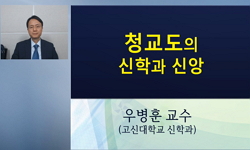In the sixteenth century, Protestant, Catholic, theologians and rulers all were obsessed with “great religious passions” regardless of their status. and they insisted that the confession of their faith should be carried through the world with forc...
http://chineseinput.net/에서 pinyin(병음)방식으로 중국어를 변환할 수 있습니다.
변환된 중국어를 복사하여 사용하시면 됩니다.
- 中文 을 입력하시려면 zhongwen을 입력하시고 space를누르시면됩니다.
- 北京 을 입력하시려면 beijing을 입력하시고 space를 누르시면 됩니다.
https://www.riss.kr/link?id=A105587585
- 저자
- 발행기관
- 학술지명
- 권호사항
-
발행연도
2018
-
작성언어
Korean
- 주제어
-
자료형태
학술저널
-
수록면
117-148(32쪽)
- 제공처
- 소장기관
-
0
상세조회 -
0
다운로드
부가정보
다국어 초록 (Multilingual Abstract)
In the sixteenth century, Protestant, Catholic, theologians and rulers all were obsessed with “great religious passions” regardless of their status. and they insisted that the confession of their faith should be carried through the world with force. The spirit of the Reformation era was regarded as ‘nothing more important than the truth of God’ and all their political and personal ambitions were subordinated to that. Indeed, many large-scale conflicts in the Reformation era were a product of religious passions. Thus, the Reformation started with a religious enthusiasm.
Reformers such as Luther, Zwingli, and Calvin, and even rebellious Reformers, were also excellent figures in their religious passion. Everything in this era was subordinated to religious zeal. But this religious enthusiasm inevitably led to conflicts. In particular, the Reformed and Roman Catholics conflicted directly in many regions. However, it was the Peace of Augsburg Treaty that temporarily restricted large-scale conflicts in Germany.
The religious enthusiasm has been amplified, resulting in a massive war that the inner weaknesses of the Peace of Augsburg Treaty could no longer afford. The destructive war that took place over the course of three decades retreated the religious passion from almost every the public to the private. The era of the Reformation began with a religious enthusiasm, but it ended regretfully with religious indifference. It was the Treaty of Westphalia that symbolized this phenomenon. At the same time, the Treaty of Westphalia brought a new era: modern.
목차 (Table of Contents)
- 1. 들어가며
- 2. 종교개혁의 시대: 신앙적 열정의 시대
- 3. 종교적 투쟁과 30년 전쟁
- 4. 베스트팔리아 조약
- 5. 30년 전쟁의 결과
- 1. 들어가며
- 2. 종교개혁의 시대: 신앙적 열정의 시대
- 3. 종교적 투쟁과 30년 전쟁
- 4. 베스트팔리아 조약
- 5. 30년 전쟁의 결과
- 6. 나가는 말
- 참고문헌
- Abstract
동일학술지(권/호) 다른 논문
-
- 신학지남사
- 한천설(Cheon Seol Han)
- 2018
-
- 신학지남사
- 이상원(Sangwon Lee)
- 2018
-
마르틴 루터(Martin Luther, 1483-1546)의 생애와 주요 저술 (2)
- 신학지남사
- 이상웅(Sang Ung Lee)
- 2018
-
- 신학지남사
- 서요한(Yohahn Su)
- 2018




 DBpia
DBpia




